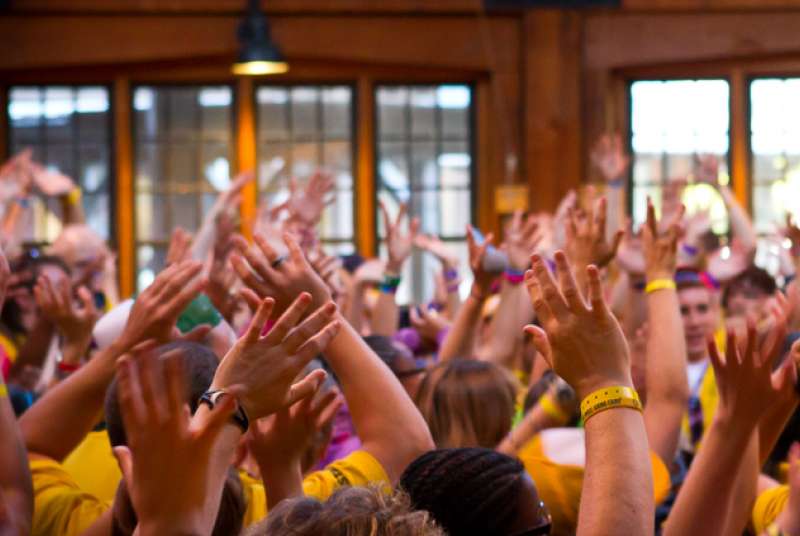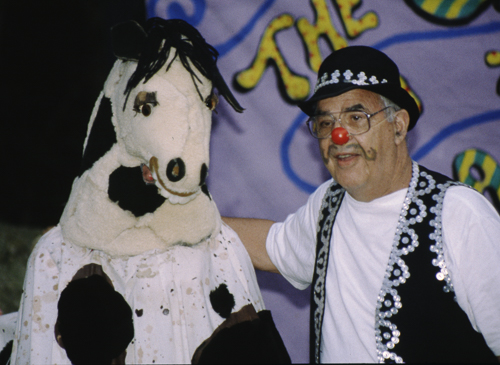
Fulfilling Paul Newman’s Dream
 The Hole in the Wall Gang Camp was established for children with life-threatening illnesses in 1988 in Ashford, Connecticut. The camp began under the leadership of actor Paul Newman, who wanted an environment in which the campers would just be children who could “raise a little hell.” Newman relied on pediatric hematologist/oncologist Howard “Doc” Pearson to develop and safely provide on-site medical support. The following is an excerpt from a memoir by Pearson, who passed away in October 2016, and his daughter-in-law, Mary Lou Shefsky.
The Hole in the Wall Gang Camp was established for children with life-threatening illnesses in 1988 in Ashford, Connecticut. The camp began under the leadership of actor Paul Newman, who wanted an environment in which the campers would just be children who could “raise a little hell.” Newman relied on pediatric hematologist/oncologist Howard “Doc” Pearson to develop and safely provide on-site medical support. The following is an excerpt from a memoir by Pearson, who passed away in October 2016, and his daughter-in-law, Mary Lou Shefsky.
From the start, physicians and nurses stayed in the background. Their presence made it possible for campers to continue the therapies prescribed by their pediatricians and hematologists/oncologists while they experienced the fun and laughter of The Hole in the Wall Gang Camp (THITWGC). However, Camp became much more than the traditional activities of a summer camping experience involving swimming, boating, fishing, and arts and crafts. Most people, when they visit THITWGC for the first time, detect a special feeling in the air—something that might be described as a combination of high positive energy, vibrations, and an electric feeling that might be termed as crazy or magical. It feels good to be there! Laughter, singing, dancing, and positive attitudes are contagious and work together to help children heal emotionally. Staff members make the magic happen—they are creative, energetic people with positive attitudes and an enormous capacity for giving and loving.
Laughter is an omnipresent and vital component that has developed and evolved at Camp over the years, in large part due to the Big Apple Circus clowns. When children arrive for a session, they enter the property from Highway 44 onto a dirt road, pass underneath the rustic twig sign, and are greeted by enthusiastic staff and clowns dressed in costumes and brandishing water pistols. Starting from the first moments, the clowns infuse Camp with a mixture of imagination, exaggeration, expression, tricks, whimsy, silliness, and laughter. Along with the other staff, the clowns create a general atmosphere that lifts campers’ spirits and helps them emotionally soar. The clowns are professionals from the non-profit Big Apple Circus (BAC) in New York City, founded in 1977 by Paul Binder ’63 and Michael Christensen as a classical European-style, one-ring circus dedicated to serving the communities in which they perform.
Inspired by the death of his brother from pancreatic cancer, Michael Christensen created the BAC Clown Care in 1986. This innovative community outreach program places professional performers into pediatric hospitals. These “clown doctors” integrate juggling, mime, music, storytelling, puppetry, magic, and slapstick into their “clown rounds,” to reducing stress for children, caregivers, and medical staff they serve.
Paul Newman had been an active supporter of the BAC and its Clown Care program through Newman’s Own Foundation. While the circus was performing in Boston in June 1988, Michael, along with that year’s production star Yang Xio Di and veteran Clown Care artist Kim Winslow joined Paul and the staff on the opening day of The Hole in the Wall Gang Camp. Through these three artists, the BAC and its Clown Care program became a perfect partner of the THITWGC. Since 1989, the BAC has had resident pairs of clowns at Camp. Kim Winslow, whose clown name is “Loon,” became known for skillfully blowing huge bubbles, sometimes in rectangular shapes, which would shine with luminescent rainbow colors for everyone’s delight.

Kim/Loon blowing bubbles in front of the dining hall (courtesy The Hole in the Wall Gang Camp)
In addition to Loon, there have been many BAC clowns at THITWGC over the years, and all of them have brought their special talents to enrich the lives of campers, staff, and volunteers. Ilene Weiss, whose clown name is Noodle, can beautifully sing everything from clown opera to improvised rap music, as well as play a variety of musical instruments. Therese Schorn (Fidget the Clown) often wore a costume that made her look like she was riding a flamingo, whose was named Flora. As Fidget rode Flora around, the bright pink bird pecked the ground with her beak, pretending to pick up nuts. One day, the clowns announced that Flora had laid some eggs that were about to hatch. After a couple of days during which the clowns hyped up the story of Flora’s eggs, Fidget and Flora proudly entered the Dining Hall followed by two campers dressed up as pink flamingo chicks.

Fidget the Clown and Flora (courtesy The Hole in the Wall Gang Camp)
The clowns invented other magical narratives and acts that were woven into the life of Camp and entertained us all. Fidget, thinking that a scruffy horse might be appropriate and consistent with the western theme of Camp, invented a slightly pathetic two-person horse with buckteeth and bulging eyes—and Wonky the Wonder Horse was born! Because clowns like to mythologize the ridiculous, Fidget and Loon developed the Wonky character into a hero. They devised silly emergencies to provide Wonky the opportunity to swoop in and save the day. They made grainy black and white cowboy movies featuring Wonky as the hero for campers to view, and one even included Paul. With my help as either his rear end or his trainer, Wonky often performed at the Theater and became a Camp legend.

Wonky on stage, with Doc Pearson as his trainer (courtesy The Hole in the Wall Gang Camp)
In addition to laughter, research has shown that music and dancing can have a positive impact on attitudes and health through the release of tension and by encouraging self-expression and a feeling of wellbeing. For about 20 years, Leo Loginov-Katz filled Camp with music. Leo’s first summer at THITWGC was in 1993. He integrated himself into the existing theater efforts but also began using his musical talents. He played a keyboard at mealtimes in the Dining Hall, where his fun music caused an eruption of crazy dancing in the middle of the circular eating area to songs such as “Bouncin’ Round the Room.” Dancing and singing after meals quickly became a tradition, with counselors and volunteers supporting campers in wheelchairs or with disabilities so that everyone could be caught up in the rhythm and joy of the moment. We all enjoyed Leo’s music as we sang Camp songs such as “Camper, Camper, Shake Your Bushy Tail” and “Grandma’s Feather Bed.” One special song that became the unofficial Camp anthem was “Stars in the Sky.” As the words of the song express, it still can “bring the summer right back to me” when I hear it.
Excerpted from Fulfilling Paul Newman’s Dream: “Raising a Little Hell” and Healing at The Hole in the Wall Gang Camp by Howard A. Pearson, M.D., and Mary Lou Shefsky, M.P.H. Copyright 2016 by the authors and reprinted by permission. For more information, visit www.holeinthewallgang.org.










